

11 Powerful Strategies to Leverage Headless CMS for B2B Marketing Success
Headless CMS for B2B empowers companies to effectively organize and deliver their content across multiple channels. Discover how this innovative technology enhances content management, ensuring a seamless experience for both businesses and their customers. While this model has proved to be effective in a lot of cases, sometimes it can put a limit on flexibility and adaptability, especially in an era of multichannel experiences.
The headless CMS is a modern concept, characterized by decoupling one’s content management backend from its presentation layer. In a headless CMS, one keeps the content independent of its presentation, and through the APIs, it allows delivery to any platform or device. It will enable companies to deliver frictionless, omnichannel experiences that meet audience demands via a website, mobile app, or any other type of digital touchpoint. Headless CMS platforms allow organizations to be flexible and scalable, providing them with the chance to innovate and change their content strategies with changes in customers’ needs and technologies.
The more businesses acknowledge the delivery of engaging and tailored content across all diverse platforms, the greater it becomes to understand the major differences between headless and traditional CMS. In this research, the advantages of Headless CMS for B2B are shown, and their role in improving content delivery and user experience in today’s fast-moving digital environment.
Why is a Headless CMS Advantageous for B2B Web Development?
It’s in this respect that it is that a headless content management system will most benefit B2B web development by simply changing how businesses manage and deliver their content. One major advantage is increased flexibility. Companies in the B2B landscape often have to provide content on multiple channels, such as websites, mobile apps, and third-party platforms. A headless CMS empowers developers to create and customize front-end experiences with any technology stack so businesses can tune their digital presence as required to meet audience needs without being constrained by a monolithic system. In a Headless CMS for B2B context, this adaptability is very important, as personalization and targeted messaging are key to engaging complex decision-making units.
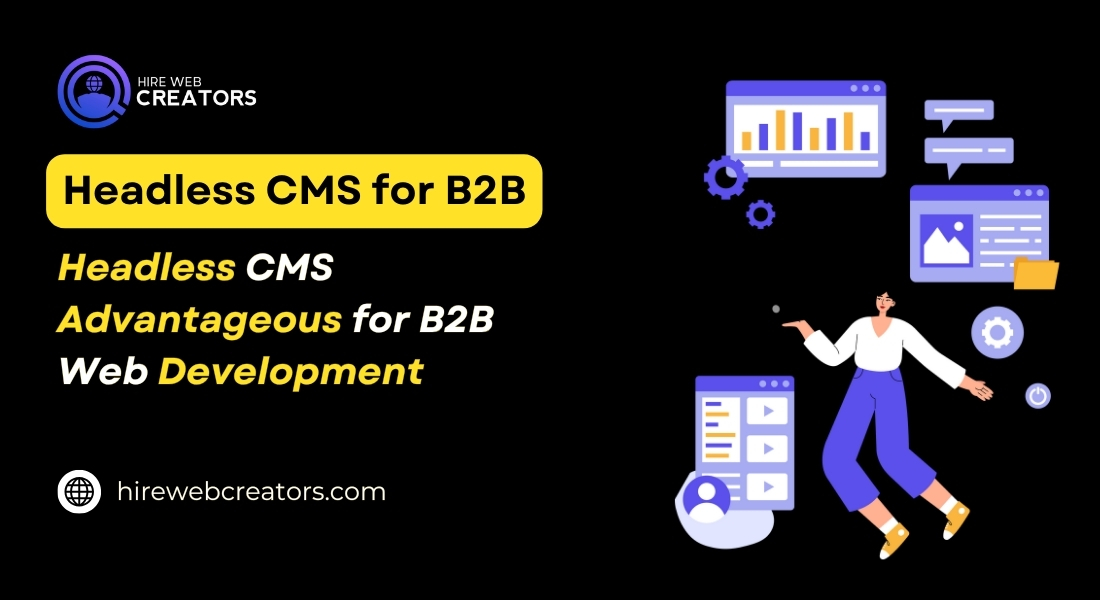
Another benefit of a headless CMS in B2B web development is increased scalability. In the growth of B2B organizations, a headless CMS would manage to scale effortlessly without any need for an overhaul in the entire content management process as the content needs to evolve. Creation, management, and distribution are possible with it, independent of front-end technologies, and this enables quick responses to changing markets and emergent trends. It is paramount in the B2B industry, since one turn and implementation of a new strategy may mean an advantage over the competition.
A headless CMS fosters collaboration among distributed teams in B2B settings by allowing content creators—marketers, developers, and sales teams—to manage and update content through a user-friendly interface. This separation of roles enables developers to focus on user experience optimization without disrupting content creation workflows. Ultimately, the benefits of a headless CMS make a strong case for B2B web development, promoting efficient content management, improved user experiences, and greater business responsiveness.
How Does a Headless CMS Improve Content Management in B2B Environments?
A Headless CMS for B2B allows for flexibility and efficiency in how content is created, stored, and delivered in any B2B environment. Traditional CMS platforms often couple the content and presentation layers, thereby complicating the re-purposing of content across channels. In contrast, a Headless CMS for B2B breaks these layers apart, enabling businesses to beam their content effortlessly across multiple platforms, from websites to mobile applications and social media. This feature is extremely useful for B2B companies engaging with heterogeneous audiences and needing consistent messaging across these varied touchpoints.

Headless CMS for B2B facilitates ease of collaboration between teams within a B2B company. Typically, B2B content creation involves a diverse set of stakeholders, including marketers, developers, and product teams, each with specific needs and workflows. A headless CMS gives content creators independence from needing developers; it allows them to work on a user-friendly interface while developers focus on integration and optimization for front-end experiences. This separation of responsibilities accelerates content creation, enhancing communication and collaboration between teams for more integrated and effective content strategies.
Headless CMS for B2B enables advanced customization and personalization, catering to the specific needs and preferences of B2B customers. It simplifies managing content for different audience segments through APIs, delivering tailored content based on user behavior and demographics. This targeted approach enhances user engagement and boosts conversion rates, as B2B buyers are more likely to respond to content that addresses their unique challenges and interests.
What are the Key Benefits of Using Headless CMS for Scalability in B2B?
Utilizing a headless content management system (CMS) offers significant scalability advantages for B2B organizations, particularly as they grow and adapt to changing market demands. One of the primary benefits of a Headless CMS for B2B is the ability to manage multiple digital channels from a single content repository. As B2B companies expand their digital presence—whether through websites, mobile applications, or other platforms—a headless CMS allows them to distribute content seamlessly across these channels without duplicating efforts. This unified approach ensures consistent messaging and branding, enhancing the customer experience while reducing the workload on content teams.
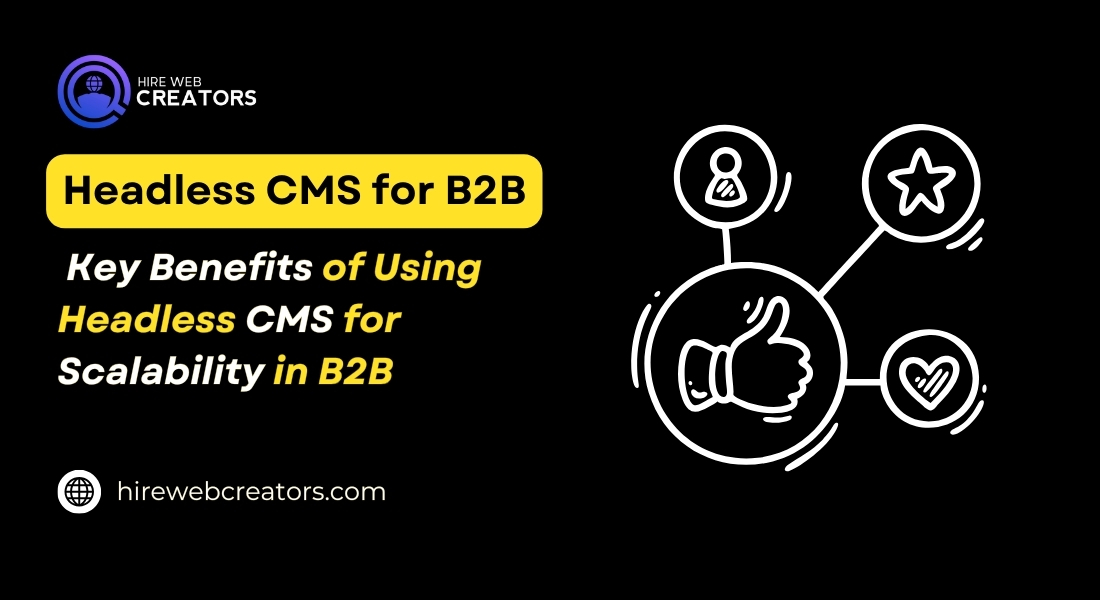
Another key benefit of a Headless CMS for B2B scalability is its flexibility in technology integration. B2B organizations often rely on various software solutions, including customer relationship management (CRM) systems, enterprise resource planning (ERP) systems, and marketing automation tools. A headless CMS enables these integrations through APIs, allowing businesses to connect their existing tools and workflows easily. This flexibility not only streamlines processes but also allows companies to adopt new technologies as they evolve, ensuring that they remain competitive and can quickly adapt to market changes or customer preferences.
Headless CMS for B2B platforms is designed to handle increased traffic and content loads without compromising performance. As B2B companies grow, their digital traffic typically increases, which can strain traditional CMS platforms that are not equipped to scale efficiently. A headless CMS can accommodate this growth by separating the content management layer from the presentation layer, ensuring robust performance and reliability even as the demand and complexity of digital interactions increase.
How Does a Headless CMS Enhance Website Performance for B2B Businesses?
The headless CMS for B2B greatly boosts the performance of websites for B2B companies, since it is unique in terms of architecture and flexible in deployment. Unlike traditional CMS platforms that couple the back-end content management with the front-end presentation layer, the headless CMS for B2B breaks this coupling to help businesses serve content via APIs to any device or channel. This will improve loading time and site speed, as content can now be optimized to serve users based on the kind of device in use, be it desktop, mobile, or any other IoT device. The result is that B2B companies can provide a seamless user experience, which is important in customer retention and increasing conversion rates.
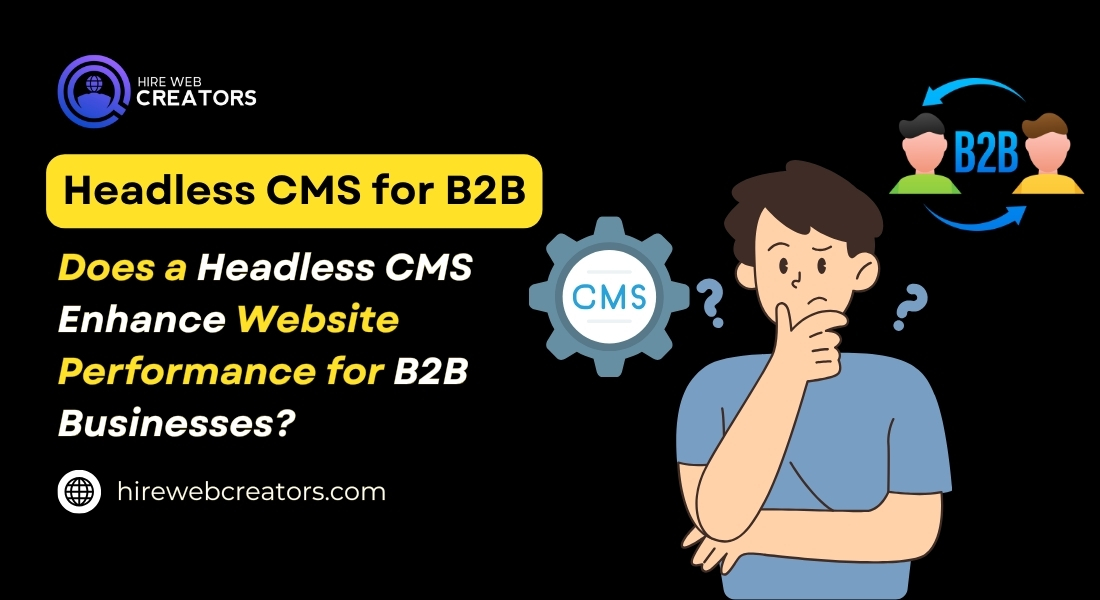
Another way a headless CMS for B2B helps in improving website performance is by allowing B2B businesses to use faster caching strategies. For example, the tightly coupled content and presentation in traditional CMSes do not allow effective caching. However, within a headless CMS for B2B, the power remains with the developer to leverage edge caching or CDNs for faster content distribution. It provides reduced server loads and less time in content retrieval, ensuring that the website remains responsive to users in cases of high traffic and peak usage. This is of paramount capability to B2B companies that often have fluctuating traffic based on market demand, events, or promotional campaigns.
The headless CMS for B2B improves website performance with the flexibility of choices in technology stacks. With the decoupled architecture, B2B businesses can choose best-of-breed frontend frameworks for performance, such as React, Vue.js, or Angular. This gives the flexibility to build fast and modern web applications with complex functionalities that do not have to sacrifice speed and efficiency. Moreover, independent customization and optimization of the user interface concerning the backend further ease the process of implementing some sophisticated performance-enhancing techniques, such as lazy loading and responsive design, for B2B businesses, thus improving the overall user experience.
What Role Does a Headless CMS Play in Multi-Channel Content Distribution for B2B?
The headless CMS becomes fundamental to B2B content distribution across channels because it offers a single, streamlined, and flexible framework for the delivery of content on all devices and platforms. In a headless CMS, decoupling the backend of content management from the frontend presentation layer allows businesses to author, manage, and distribute content through one common API. This is a critical capability for B2B companies looking to engage customers on multiple channels, such as the website, mobile app, social media, email, and more—making sure their content is formatted appropriately to reach the right person at the right time.
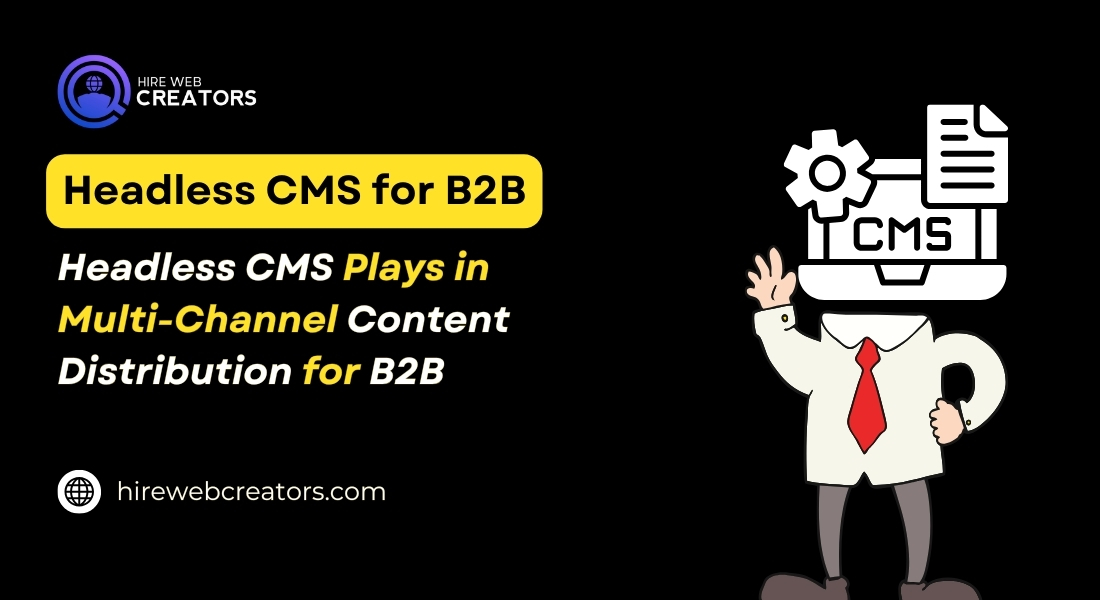
On the subject of multi-channel distribution, one of the biggest advantages of a headless CMS is its ease of supporting omnichannel strategies. In headless architecture, the B2B marketer needs to create content only once before being able to effortlessly distribute it across the various channels in use, without repetitive formatting or rework. This saves time and resources while ensuring message and brand consistency across all platforms. A headless CMS—with its API-first approach—readily empowers B2B businesses to personalize content based on audiences and channels, thus expanding the reach of an organization to engage customers in the most meaningful ways possible, no matter where they are consuming the content.
A headless CMS provides the flexibility and scalability needed for B2B businesses to adapt to market changes and the emergence of new technologies. Since new channels and platforms come up day in and out, B2B companies, within minutes, can integrate them into their content distribution strategy without worrying about changes in the full CMS. Agility in this enables businesses to test disruptive formats—like interactive experiences, chatbots, or voice search applications—with their content, enabling it to be prepared for industry trends and customer expectations. Ultimately, headless content management allows B2B organizations to distribute content across channels with greater agility and join audiences in multichannel ways, improving engagement on more touchpoints along the customer journey.
How Does a Headless CMS Facilitate Personalization in B2B Web Development?
In B2B web development, a headless CMS offers significant personalization benefits and data-driven capabilities. Unlike traditional CMS platforms, which tightly integrate frontend and backend systems and limit personalization, a headless model separates these layers. This allows marketers and developers to create highly customized, user-friendly experiences tailored to diverse audience needs. This flexibility is crucial in B2B, where clients often have varying requirements based on their industry, role, or buying stage.
How is personalization supported? Most notably, the API-driven architecture of management without a head supports the integration of multiple data sources and analytics tools. For B2B organizations, one great example of this is through customer data on behavior, demography, and preference to drive a personalized content experience. Businesses could leverage this kind of insight to inform focused messaging and product recommendations that resonate with particular groups of users. For example, a B2B business might present customers with personalized content based on flows from previous engagements with site content, which subsequently guides them through the sales funnel concerning resource information allocation, case studies, or special offers targeting the unique problems and needs of the customers.
How Does a Headless CMS Enhance Security for B2B Websites?
Headless CMSs increase the security for websites realized in B2B, as they decouple the front end and the back end. This action eventually reduces the attack surface that potential hackers could use to their advantage. For instance, vulnerabilities in the frontend may get transferred directly to the backend, which in a traditional CMS could reveal critical information or allow unauthorized access. Due to the insulation at the backend from the public website in a headless CMS, it becomes much more difficult for attackers to breach sensitive systems. This architecture will allow B2B organizations to embed stronger access controls and security measures, making sure that only rightful and authorized persons can interact with critical data.
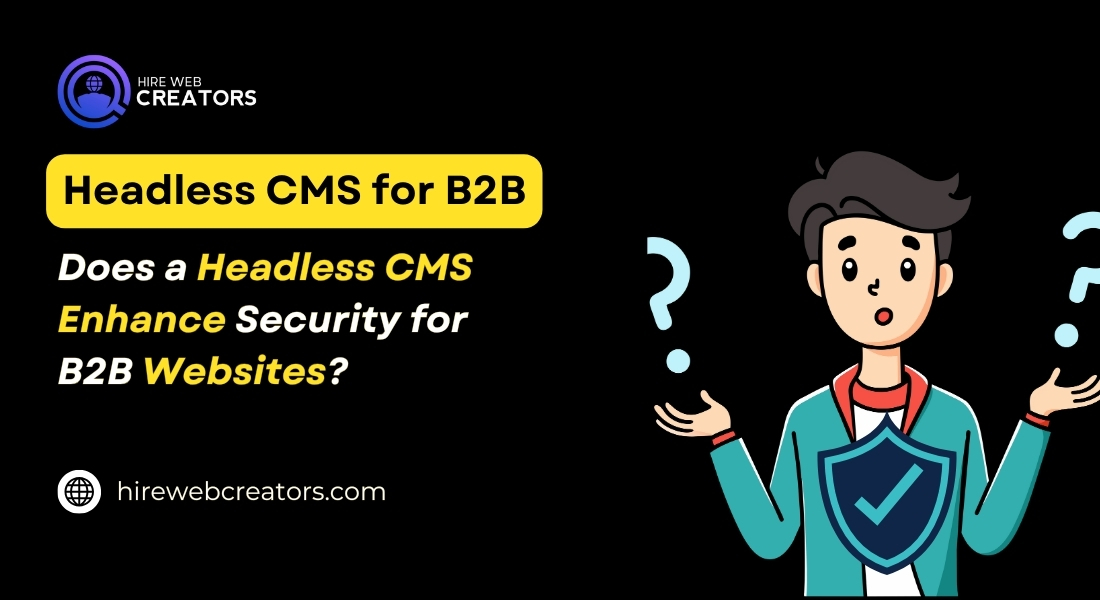
Headless CMS platforms are mostly focused on advanced security features like role-based access controls and multi-factor authentication. Such features allow the configuration of user roles and permissions in a B2B business, guaranteeing that team members can only access content and features they truly need based on their roles. RBAC keeps the risk of data leakage due to insider threats or human error at bay. Moreover, it makes the user even more secure by including multi-factor authentication, such that a user is required to provide several forms of verification before they get access to the CMS. This step helps to prevent unauthorized access.
CMS security feature includes the ability for seamless integration with external security tools and services. A B2B organization is at liberty to use application firewalls, intrusion detection systems, and encryption services in trying to enhance their security postures. This headless CMS, with its APIs, makes it possible to know the traffic, and activities of users, notice suspicious actions, and secure sensitive information in transit. It is the compelling choice for B2B websites that take care of protecting sensitive information and gaining the confidence of clients—why it is a crucial feature of security in headless CMS.
How Does a Headless CMS Support SEO Best Practices for B2B Websites?
A headless CMS offers a flexible architecture that enhances B2B website optimization by providing greater control over content delivery and site structure. Unlike traditional CMSs, which limit how content is displayed, a headless CMS decouples the front and back ends, allowing businesses to create highly customized user experiences. This flexibility enables B2B companies to optimize their sites for SEO by easily configuring meta tags, header tags, and URL structures. By leveraging a headless CMS, businesses can implement effective SEO strategies, boosting their visibility in search engine results and driving more organic traffic.
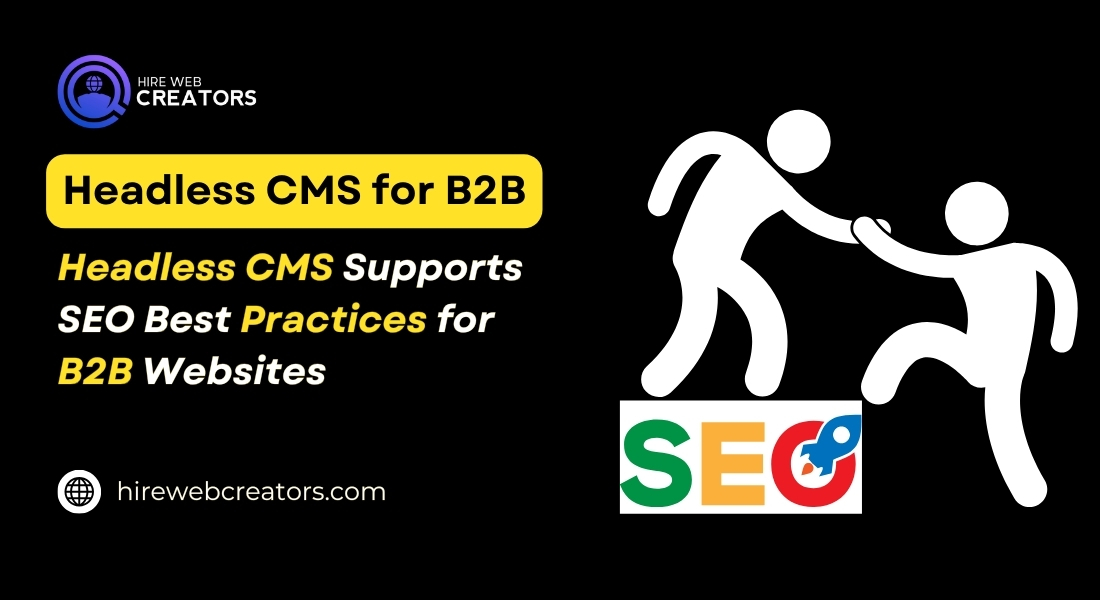
A headless CMS simplifies content delivery across multiple channels, allowing B2B companies to centrally manage content while distributing it to various platforms, websites, mobile apps, and social media. This omnichannel approach ensures consistent messaging and enables firms to tailor content for specific audiences. By implementing structured data and schema markups, organizations can enhance their chances of obtaining rich snippets in search results, boosting click-through rates and visibility. Additionally, the ability to create responsive, mobile-friendly content helps improve B2B website rankings in search engines, as mobile optimization is a key factor for SEO success.
A headless CMS enhances site performance, a crucial SEO factor, as site speed is a significant ranking criterion in Google’s guidelines. By utilizing lightweight APIs for content delivery, optimizes load speed and improves page-rendering speed, providing an exceptional online experience. Features like image optimization, reduced server response times and caching further boost B2B website performance. Consequently, faster websites result in lower bounce rates, longer session times, and increased user engagement, all contributing to better SEO rankings. In summary, a headless CMS simplifies the implementation of effective SEO practices, facilitating ongoing optimization and driving organic traffic for improved visibility.
What Are the Cost-Effectiveness Advantages of Using a Headless CMS for B2B?
One of the key benefits of using a headless CMS for B2B businesses is its cost-effectiveness. This advantage comes from its flexibility and scalability. Unlike traditional content management systems that incur high maintenance, update, and hosting costs, a headless CMS for B2B separates the backend from the front end, allowing businesses to independently build and scale their digital platforms. This separation enables companies to choose cost-effective technologies tailored to their needs, utilizing lightweight frameworks that lower hosting and infrastructure costs. Additionally, as headless CMS platforms are typically cloud-based, B2B companies can significantly reduce operational expenses related to server management and maintenance.
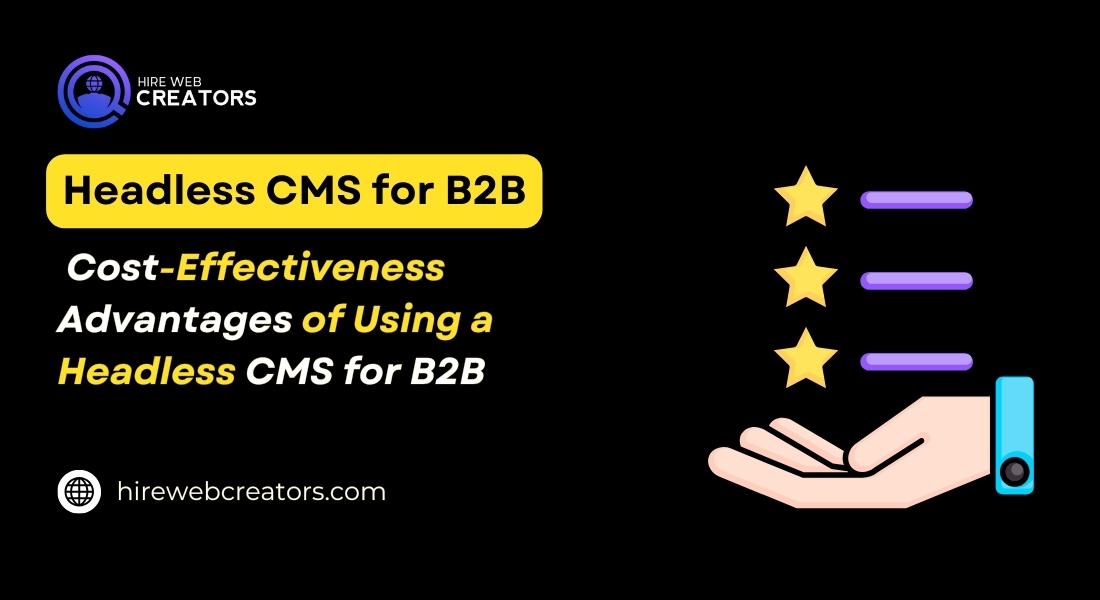
A headless CMS for B2B enables a much easier process of development. Since it involves different layers for content and presentation, a developer can easily work more efficiently on API integrations and frontend development without worrying about any kind of constraint on the backend. This can increase the efficiency of doing all this; hence, it will speed up the project completion time and reduce the labor cost for B2B companies. It further enables the re-use of content across multiple channels and therefore, no duplication of efforts that any business has to put in continuously for different platforms. Certainly saving time and resources, this also ensures consistency in messaging that reduces the chances of expensive mistakes or miscommunications.
A headless CMS for B2B offers long-term cost savings by easily accommodating evolving business needs. As B2B organizations expand their digital presence, the demand for new features and technologies increases. A headless CMS for B2B enables the seamless integration of third-party tools without overhauling the existing system, allowing businesses to invest in scalable solutions. Ultimately, the cost advantages stem from its flexibility, streamlined development processes, and adaptability, making it one of the most cost-effective technologies for enhancing a company’s digital presence.
What Are the Future Trends for Headless CMS in B2B Web Development?
With the evolution of B2B web development, headless CMS for B2B platforms will see an increase in adoption. Several major trends will ensure this. First, there is increasing personalization. More and more, B2B enterprises realize they need to offer customers tailored content and experiences. Headless CMS for B2B solutions allows marketers to create and deliver personalized content across multiple touchpoints and channels because they manage content independently of the presentation layer. Shortly, we are going to see more depth in headless CMS for B2B platforms for AI-driven personalization, which will help us learn from data analytics about customer preferences and behavior.

Another trend that is going to shape the future of headless CMS for B2B is the rise of API-first development. With businesses continuing to drive their digital strategies around agility and speed, comes the dawning need for seamless integrations across a diversified portfolio of applications, tools, and platforms. Of their nature, headless CMS for B2B solutions are designed to work with APIs, which makes it very easy to implement e-commerce systems, CRMs, or any other third-party services. This trend is likely to lend itself to even more expansion of available APIs and capabilities, easing the process by which a B2B company looking to connect its headless CMS for B2B with its existing technology stack can drive more cohesive digital experiences.
Future headless CMS for B2B development in B2B web development will increasingly focus on omnichannel strategies due to the rising demand for multi-channel distribution. B2B organizations will leverage various platforms, including websites, mobile apps, social media, and IoT devices, to engage customers. Headless CMS for B2B platforms will enable content creators to deliver a consistent message across all channels, surpassing traditional CMS limitations. In the coming years, we can expect further advancements in headless CMS for B2B, enhancing content management and distribution capabilities across diverse touchpoints.
In the fast-moving environment of B2B web development, applying a headless CMS for B2B can supply a lot of benefits to any business people working together looking to boost their digital strategy. Decoupling content management from the presentation front-end layer gives more flexibility and better scalability. The architecture allows these B2B companies to provide their audiences with personalized and continuous content across multiple media, thus answering their various needs. A headless CMS for B2B is critical to businesses geared toward agile reactions to market demand and customer expectations, enabling them to innovate and quickly adapt in a bid to drive better engagement and satisfaction.
The benefits of headless CMS for B2B extend beyond content delivery. Enhanced security features, improved SEO capabilities, and being attuned to new emerging technologies like AI and machine learning place headless CMS solutions at the forefront for any B2B organization. It is an approach that allows firms not only to optimize their content management process but also puts them in a position for future growth and success in the digitally, ever-growing competitive landscape. Lastly, headless CMS for B2B can be a game-changing step for B2B enterprises to elevate their online presence and ease the process of web development.
